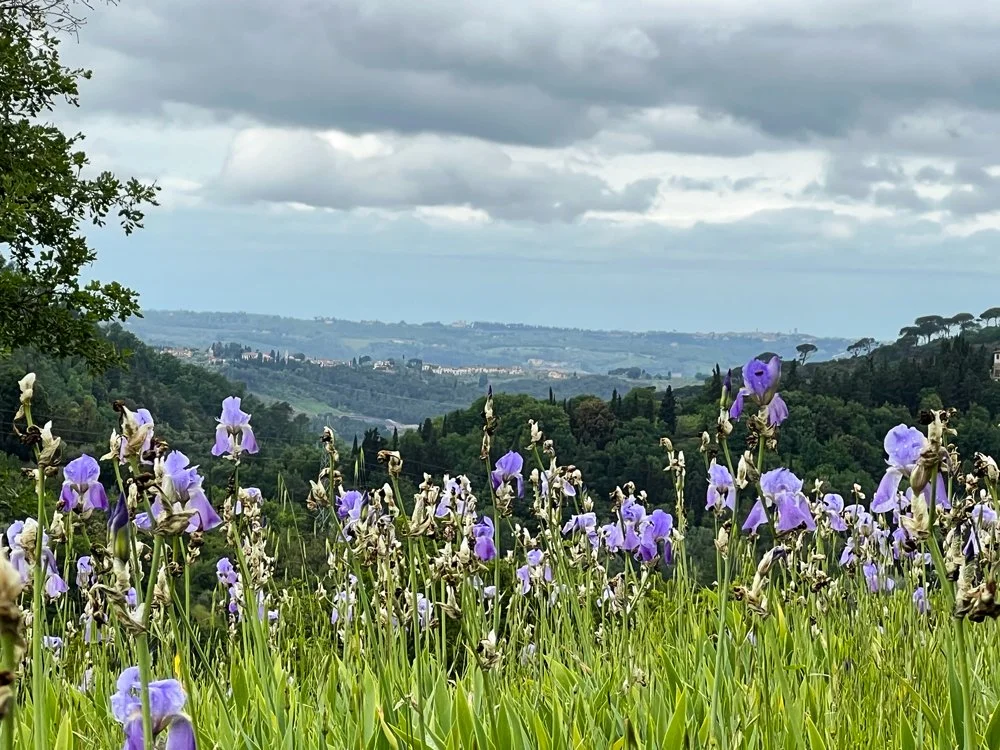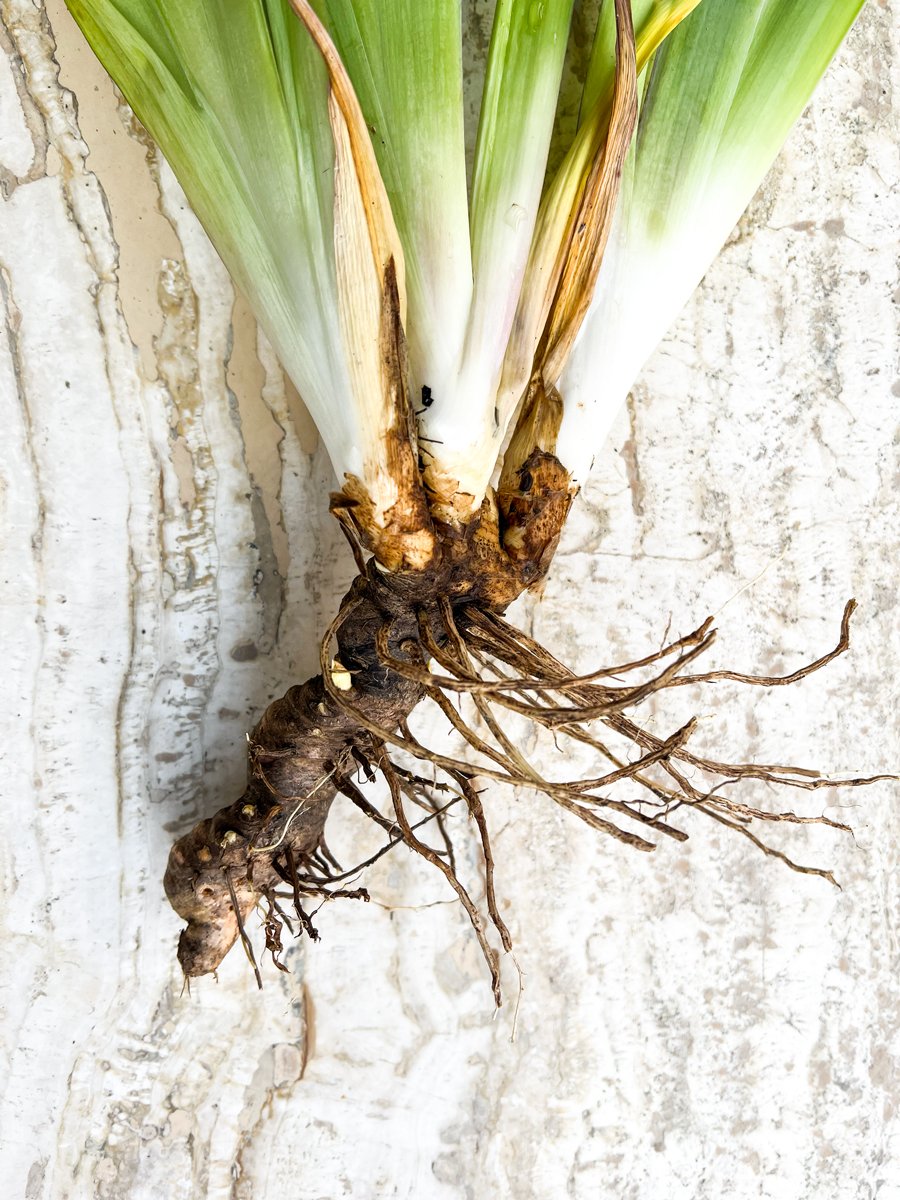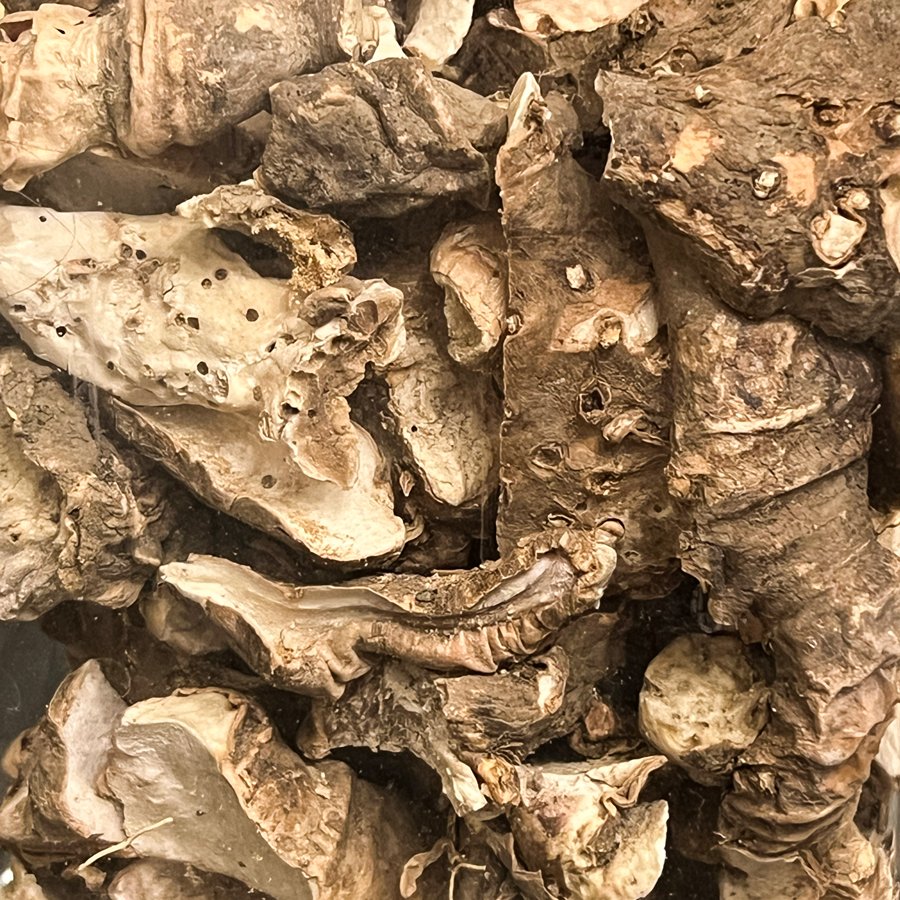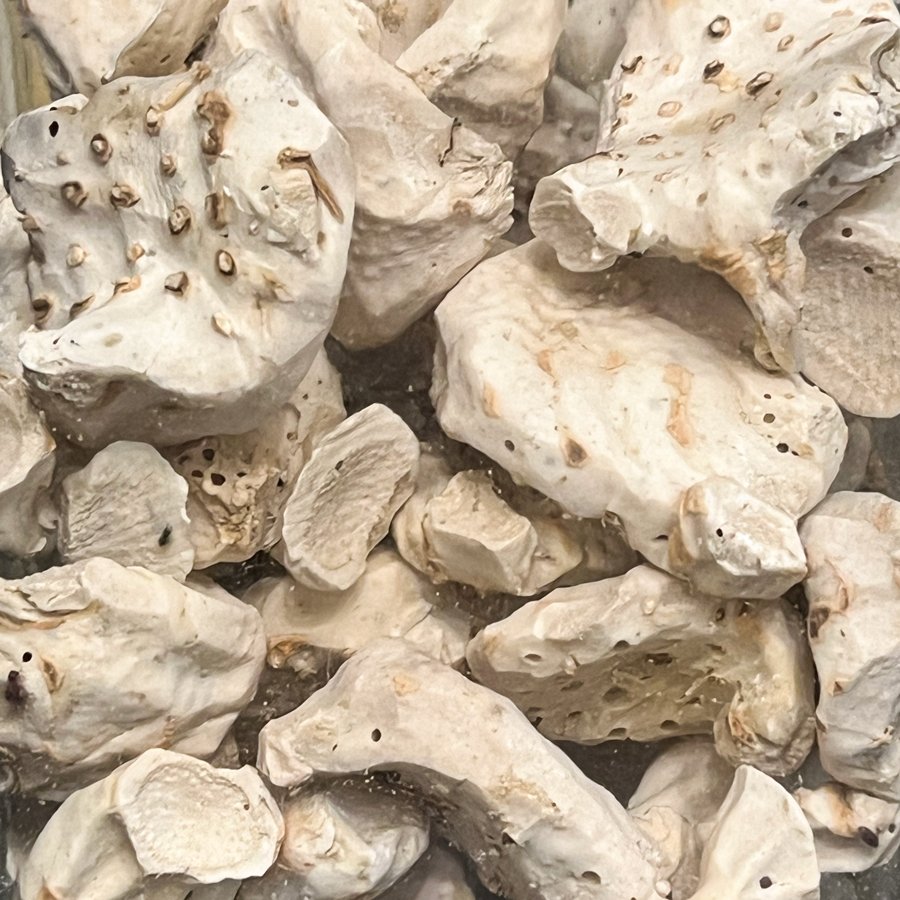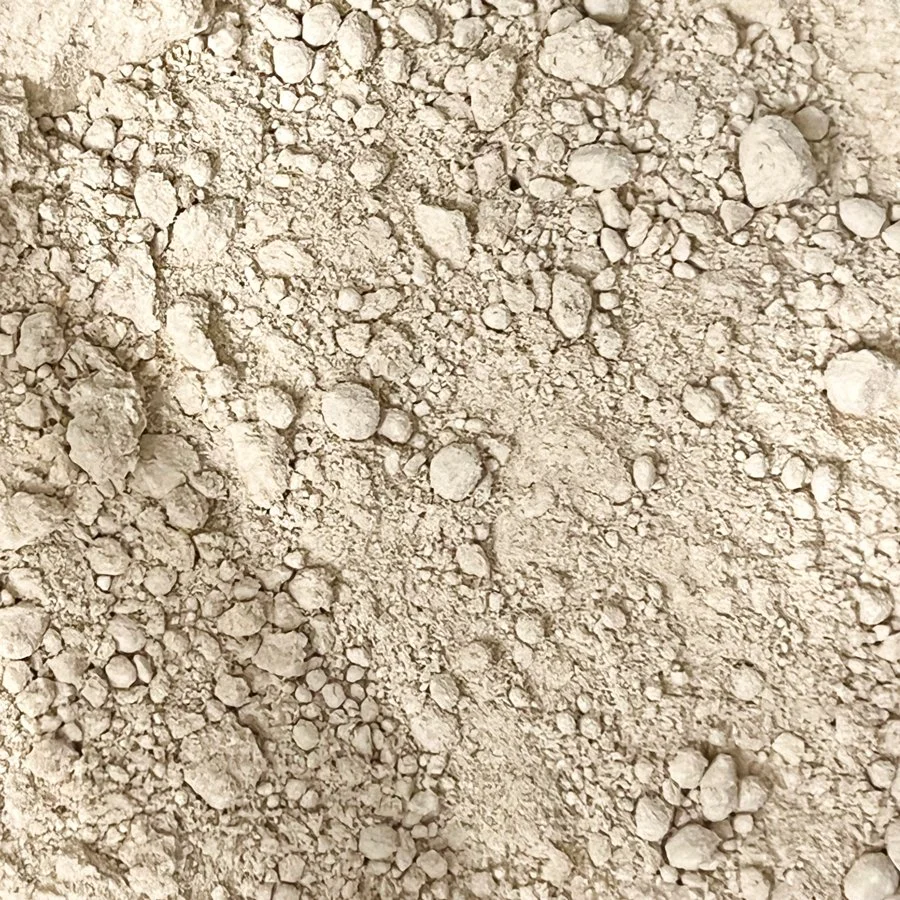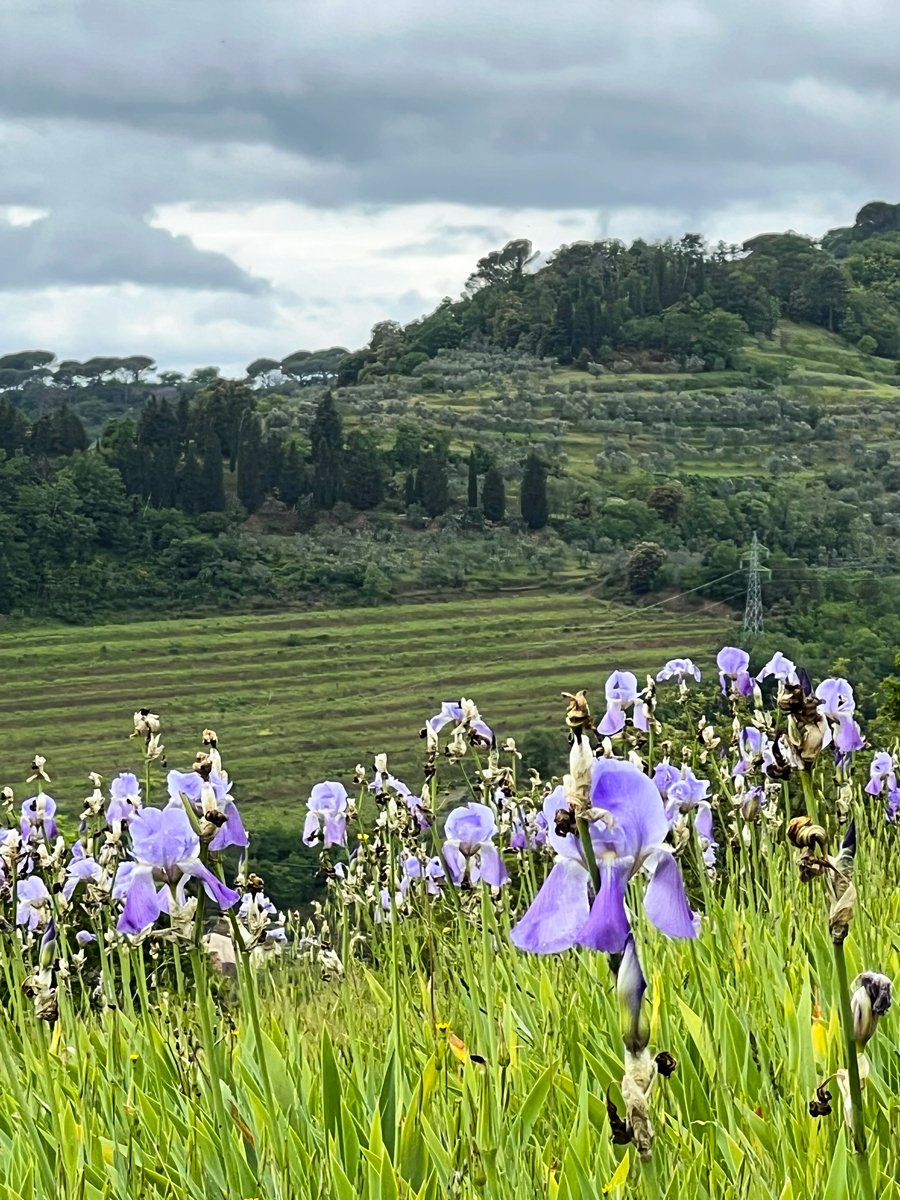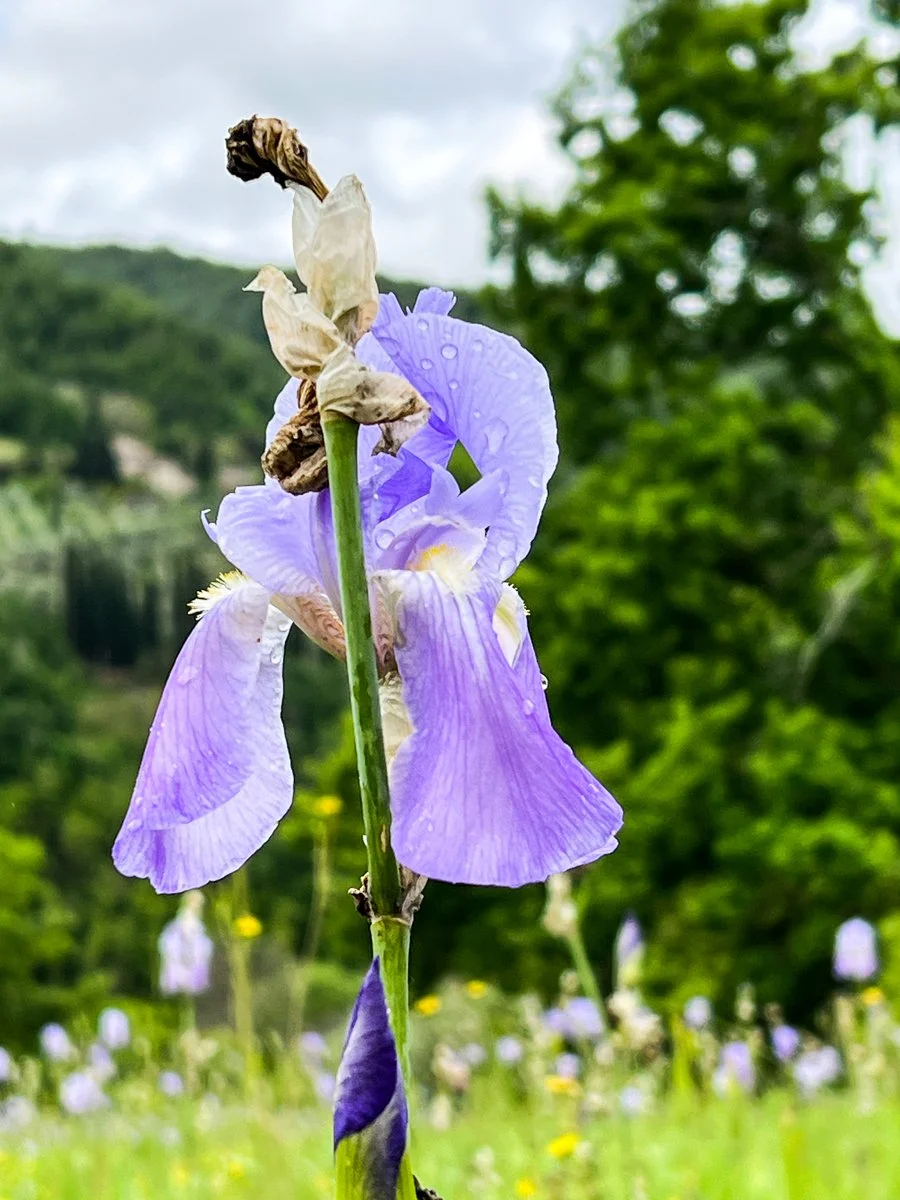Iris - Field Trip of Dreams
When we arrived in Italy last spring we were so overwhelmed by the countless local botanicals that it inspired us to start this Scent Journal. One of the early entries was of Irises. The Iris Palida, native to the Tuscan hills surrounding Florence and legendary perfumery ingredient, grows spontaneously here since before recorded history.
While researching its story, we read an article about the Pruneti farm in the Chianti region of Tuscany and its long history of providing iris (orris) root to the perfumery industry. We immediately tagged it as a “must visit” destination for the next season of iris blooms in the hopes get a first-hand account of this delicate flower, its precious roots, and content to share about perfume making.
I reached out to Pruneti to ask if we could visit and learn more. Katy, the PR/Marketing manager graciously replied and set up a meeting. So, on a rainy morning this May we made our way to the tiny Tuscan town of San Polo, just south of Florence, to the Pruneti “frantoio” to meet with fourth generation grower, Gionni Pruneti. The town had just completed its annual Giaggiolo (local speak for iris) Festival but we had a personal invite from Gionni and Katy and we relished the idea of a proper introduction to all things iris! Gionni and his brother, Paolo, have rekindled the art of iris production after many ups and downs in the capricious perfumery markets, expanding into new (and delicious) products such as Iris Liquor, Iris Amaro and Iris Gin. They are convinced that such diversification is the key to keeping their prize irises insulated from market swings. Their forward-thinking company also produces high quality olive oil, wine, and saffron (more on saffron soon!) on their land.
The history of the iris, as explained by Gionni, is embedded into the Florentine DNA as well as his family’s own history. Although their family has long cultivated iris, there have been crisis in the industry that has challenged keeping production going. The 1990’s brought a major blow to the iris trade that nearly saw the demise of the nobel plant that had become overly dependent on one single industry for its fortune. As commercial perfumes trended away from classic, robust scents and towards new technologies with more synthetic (cheaper) ingredients to satisfy not only consumer trends but, more over, balance sheets, the iris market plunged. Producing orris root is a very laborious affair which makes it a very expensive ingredient. The root bulbs (rhizomes) are only harvested after a 4 year growth cycle, cleaned by hand as traditionally done, and then air aged for another 3-4 years before they are ready to be sliced, diced, or milled into their final form. From thick root slices with the skin (black rhizomes), or slices without skin (white rhizomes), small cube-like (“tisane”) cuts, or powders of various coarseness, the roots are what makes the industry swoon. And not only at its prices. The roots do have a distinct scent (irones), talc-y and woody with light floral undertones and a faint sweetness but, more importantly perhaps, it also serves as an incredible binder aiding in the longevity of a scent. Nothing man-made beats it with such elegance.
HISTORY LESSON
The confusion surrounding the color of the iris that is the symbol of Florence:
There are 3 native iris varieties locally. The Iris Palida (pale violet), Iris Germanica (purple), and the Iris Florentina (white). But the Florentine symbol is not a white iris. It’s red. What gives? Was that an option? No.
The original city symbol was a white iris over a red background until the Guelfi reversed it after defeating the Ghibellinas in the 13th century, thereby commemorating their victory and instilling their own flag colors of a red cross over a white background.
The rain let up so we jumped into Gionni’s pickup truck to visit the iris fields! The early rains beat us to the peak display of blooms but there was still plenty to enjoy–including the sublime setting of the surrounding Chianti hills. Under an overcast sky, it was like standing in a Monet painting of dewy hues. The soil composition in this specific location provides the best quality and yield for the Iris Palida cultivation. Gionni explained that the same bulbs only a few hills over don’t produce the same quality roots. The microclimate to agriculture is everything, and not just for Chianti Classico it turns out. As good custodians of the land, the Pruneti farm employs biodynamic techniques, avoiding pesticides, weeding by hand, and rotating crop plantations, to preserve the fertility of the generous soil.
Where do we go from here?
The invaluable introduction to iris cultivation and orris root production, not to mention the history lesson and hospitality of our hosts, had our imagination running wild midway through our visit. It makes you want to jump right into formulating an iris perfume but…iris is tricky. Not because of a cost factor (although, yes) but because the scent of iris, or what is the product of iris in scent, is not what you would use singularly. Iris is amazing but like some other natural ingredients it’s not what a consumer would expect, or even want to wear. Iris flowers do have a lovely scent to them that is slightly sweet, with faint vanilla and some animalic (indole) notes that are bitter/sour as the flower matures but provide a more profound, seductive facet. But these flowers don’t provide a usable product, the roots do. The rhizomes are ground and distilled into a butter (solidified essential oil) that has resinous, sweet and woodsy notes. Further refinement of the butter for use in perfumery removes impurities but also some of the more pronounced scents. As mentioned earlier, orris root provides more function within a scent formula than actual scent. It’s not like rose, jasmine or tuberose with its strong olfactory facets that tend to be the protagonists in fragrances. Iris is like an oscar-worthy supporting actor that allows the stars to shine brighter.
Instinctively, the goal for anyone who is inspired by iris is to created something that, through thoughtfully constructed scent accords, conveys the elegance, freshness, and warmth of an iris. Perhaps even adding in all of the surrounding botanical influences from its privileged perch overlooking a tiny Tuscan village nestled in the heart of Chianti.
So, where do we go from here? Working on that.
Back in our Tuscan scent studio contemplating an iris fragrance
Visit pruneti.it for more information about their products and history
Inspired by Iris
You can find powdery iris notes among a chorus of other florals, soft woods, and spices in our enveloping aétai eau de parfum. We chose iris as part of the floral facet for its earthy and talc-like texture to compliment and to give longevity to the other floral and soft wood notes.
Although the iris notes in aétai do not come from the orris root of the Pruneti farm, we can’t help but be inspired by their story and dream up a future project…

